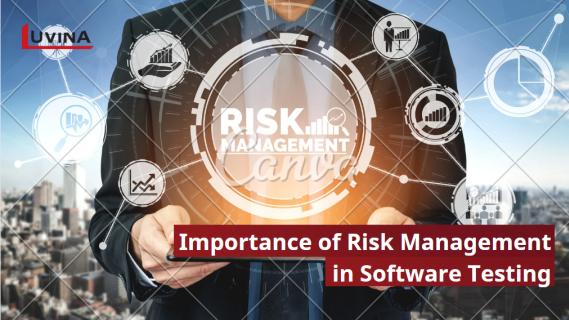Risk investment strategies are essential for startups and investors aiming to maximize returns in a highly competitive market. Venture capital and angel investing thrive on high-risk, high-reward opportunities, and understanding how to navigate these risks can lead to substantial rewards. Here are some key strategies that balance risk and reward, helping investors make informed choices while enhancing growth potential.
1. Diversify Across Sectors and Stages
Diversification is a foundational strategy in risk investment, offering a way to mitigate potential losses. By investing across various industries—such as tech, healthcare, and renewable energy—investors can spread their risk, as downturns in one sector may be offset by growth in another. Additionally, consider diversifying across different startup stages: seed-stage startups may offer high-reward potential but come with higher risk, whereas later-stage companies often offer stability but potentially lower returns. A well-balanced portfolio with investments across sectors and stages helps in reducing exposure to market volatility.
2. Focus on High-Growth Markets
Selecting investments in high-growth markets is another strategy to increase returns. Sectors like artificial intelligence, green technology, and biotechnology are witnessing rapid expansion and garnering substantial investor interest. Investing in companies positioned in these markets can increase the probability of success, as demand often drives company growth. High-growth sectors are also typically less saturated, providing opportunities to capitalize on early trends. Staying updated on emerging sectors and investing in companies that capitalize on these trends can lead to outsized returns.
3. Assess Management Team and Vision
The management team behind a startup can greatly influence its success or failure. Invest in startups led by experienced, resilient, and visionary founders, as they are often better equipped to navigate challenges. A strong team demonstrates adaptability and problem-solving skills, increasing the likelihood of reaching key milestones. Additionally, founders with clear, scalable visions aligned with market needs are more likely to attract future funding, improving growth potential. Evaluating the team and their vision thoroughly can reduce the risk associated with the investment.
4. Prioritize Market-Driven Due Diligence
Thorough due diligence is essential to successful risk investing. Analyzing the market need, scalability, and competitive landscape of potential investments provides valuable insights into growth potential and possible risks. Understanding the competitive positioning of the startup in its market and its ability to scale can reduce risks by ensuring that the business model aligns with market demands. A market-driven approach to due diligence helps in identifying startups with strong fundamentals, enhancing the potential for positive returns.
5. Set Risk Tolerance Limits
Establishing risk tolerance limits for each investment can provide clarity and control in high-risk investing. Determine an acceptable risk-to-reward ratio for each investment, considering potential losses relative to anticipated gains. Setting these thresholds ensures that individual investments align with your broader financial goals and risk tolerance. This approach allows investors to make calculated decisions that support sustainable portfolio growth, as well as to manage expectations and limit the impact of potential losses.
6. Leverage Syndicate or Co-Investment Opportunities
Partnering with other investors through syndicate or co-investment deals is a practical way to share risk. Co-investing allows investors to diversify their exposure across multiple ventures while gaining access to valuable insights from fellow investors. Syndicate deals provide a platform to back investments led by experienced professionals, allowing newer investors to participate in deals that may offer high returns while minimizing the amount of capital at risk. This collective approach allows for pooling knowledge and resources, helping to reduce exposure while increasing the likelihood of success.
7. Prepare for Exit Scenarios Early
Planning exit strategies in advance can help investors maximize returns and minimize risk exposure. Consider various exit options, such as acquisitions, mergers, or initial public offerings (IPOs), to ensure flexibility when it’s time to liquidate the investment. Discuss potential exit scenarios with founders early on, as alignment on exit goals ensures that investors and the startup team have a shared vision for success. By planning for exits from the beginning, investors can strategically assess the best time and method to realize gains or mitigate losses.
8. Utilize Convertible Notes for Added Security
Convertible notes, which offer debt that can later convert into equity, provide a flexible investment option for high-risk startups. For early-stage companies, convertible notes allow investors to gain potential equity without setting a company valuation prematurely. This minimizes risk by giving investors a secure position, which can later convert to ownership as the startup matures. Convertible notes help to manage risk by providing a structured timeline for equity acquisition while allowing startups to grow before equity stakes are solidified.
9. Monitor and Adapt to Market Changes
In the high-risk world of venture investing, market conditions can shift rapidly. Monitoring industry trends, regulatory changes, and economic factors helps investors adapt to evolving conditions. Stay informed about developments that might affect the portfolio, such as new technologies or regulatory adjustments in sectors like fintech or healthcare. By staying proactive and ready to adjust investments as needed, investors can protect their portfolio and make decisions that capitalize on market shifts.
Navigating risk investment requires a strategic, informed approach to balance potential gains with manageable risk. Through diversification, careful due diligence, and a focus on market alignment, investors can make calculated decisions that enhance portfolio resilience. With the right strategies, risk investing offers a pathway to substantial returns, fueling growth for both startups and investors alike.


















